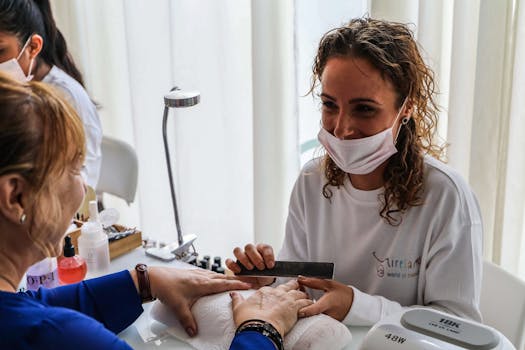The skin on your abdomen plays a significant role in both aesthetics and overall skin health. Whether you’re dealing with issues related to weight loss, aging, or concerns about the elasticity post-pregnancy, understanding how to care for this area is vital. This article delves into the specifics of abdomen skin, offering guidance on maintaining its health and addressing common concerns about changes or surgical interventions.
Understanding Abdomen Skin
The skin of your abdomen is unique, as it needs to be highly flexible. This flexibility helps accommodate various body changes, such as weight fluctuations or pregnancy. However, this also makes the abdomen prone to issues like loose skin, stretch marks, and changes in texture.
Maintaining healthy abdomen skin involves regular care, including hydration and proper nutrition. Ensuring you have a balanced diet rich in antioxidants, such as those found in fruits and vegetables, can help support skin elasticity. Using topical moisturizers that contain ingredients like hyaluronic acid and vitamin E can enhance moisture retention and improve skin texture.
Dealing with Loose Skin
Loose skin around the abdomen can occur due to significant weight loss or after childbirth. While surgery for hanging belly is an option for some, non-invasive methods such as strength training can also help tone and tighten muscles in this area, potentially improving the appearance of the skin. Engaging in regular exercise, especially activities that target the core, can enhance muscle tone and skin elasticity over time.
Surgical Options and Considerations
When it comes to addressing significant skin laxity, surgery for hanging belly, known as abdominoplasty or a tummy tuck, may be considered. This procedure involves removing excess skin and fat from the abdomen, tightening the underlying muscles for a firmer appearance.
It’s essential to consult with a qualified plastic surgeon to discuss your options, potential risks, and recovery process. Keep in mind that surgery is often considered after exploring non-invasive methods and is tailored to individual needs and health conditions.
For those interested in exploring non-surgical advancements, check out our article on the latest breakthroughs in skincare technology for innovative solutions to skin concerns.
Maintaining Healthy Abdomen Skin
To keep your abdomen skin looking its best, consider incorporating the following practices into your daily routine:
- Stay Hydrated: Drinking enough water helps maintain skin elasticity and keeps it supple.
- Nourish Your Diet: Consuming foods high in vitamins and minerals supports overall skin health.
- Exercise Regularly: A blend of aerobic and strength-training exercises can help maintain body tone and skin structure.
- Use Sun Protection: Apply sunscreen on your abdomen when exposed to the sun to prevent damage.
Tips for Post-Pregnancy Skin Care
Post-pregnancy, many experience changes in their abdomen skin, including stretch marks and sagging. Gradual weight loss, a balanced diet, and consistent exercise can make a difference over time. Specific lotions and oils may also help reduce the appearance of stretch marks by keeping the skin hydrated and supple.
Understanding Stretch Marks
Stretch marks are common and can develop during periods of rapid growth or weight change. While they are permanent, their appearance often fades with time. Treatments such as laser therapy or topical retinoids are available and can reduce their visibility. However, consulting a dermatologist is recommended to ensure suitability and safety for your skin type.
External Resources
For further reading on the role of skin health and elasticity, you might find this Wikipedia article on skin beneficial. It provides comprehensive insights into skin physiology and various related topics.
In conclusion, caring for your abdomen skin involves a combination of healthy lifestyle choices, skin care routines, and sometimes, professional advice to manage specific concerns. Whether your focus is on preventative care or addressing existing issues, informed decisions can help maintain the skin’s health and appearance.
- Abdomen skin requires regular care to maintain health and appearance.
- Healthy diet and hydration significantly impact skin elasticity.
- Non-invasive exercises can assist in tightening loose skin.
- Consult professionals before considering surgical options.
- Consistent skin care routines can improve overall skin condition.
FAQs
What causes loose abdomen skin?
Loose abdomen skin typically results from weight fluctuations, aging, and post-pregnancy changes. The skin loses its elasticity over time, which can lead to sagging.
Can I improve my stretch marks?
While stretch marks are permanent, their appearance can be improved with topical treatments, laser therapy, or microdermabrasion under a dermatologist’s care.
Is abdominoplasty safe?
Abdominoplasty is generally safe when performed by an experienced surgeon. However, every surgical procedure carries risks, which should be discussed with your doctor beforehand.
How can I naturally tighten my abdomen skin?
Regular exercise, particularly core-strengthening workouts, combined with proper hydration and a nutrient-rich diet, can aid in tightening the skin naturally.
Are there non-surgical treatments for sagging skin?
Yes, non-surgical options include laser treatments, ultrasound therapy, and specific skin care formulations. Always consult a professional to choose the best option for your needs.






